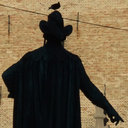Radiological findings of complications after lung transplantation.
关键词
抽象
Complications following lung transplantation may impede allograft function and threaten patient survival. The five main complications after lung transplantation are primary graft dysfunction, post-surgical complications, alloimmune responses, infections, and malignancy. Primary graft dysfunction, a transient ischemic/reperfusion injury, appears as a pulmonary edema in almost every patient during the first three days post-surgery. Post-surgical dysfunction could be depicted on computed tomography (CT), such as bronchial anastomosis dehiscence, bronchial stenosis and bronchomalacia, pulmonary artery stenosis, and size mismatch. Alloimmune responses represent acute rejection or chronic lung allograft dysfunction (CLAD). CLAD has three different forms (bronchiolitis obliterans syndrome, restrictive allograft syndrome, acute fibrinoid organizing pneumonia) that could be differentiated on CT. Infections are different depending on their time of occurrence. The first post-operative month is mostly associated with bacterial and fungal pathogens. From the second to sixth months, viral pneumonias and fungal and parasitic opportunistic infections are more frequent. Different patterns according to the type of infection exist on CT. Malignancy should be depicted and corresponded principally to post-transplantation lymphoproliferative disease (PTLD). In this review, we describe specific CT signs of these five main lung transplantation complications and their time of occurrence to improve diagnosis, follow-up, medical management, and to correlate these findings with pathology results. KEY POINTS: • The five main complications are primary graft dysfunction, surgical, alloimmune, infectious, and malignancy complications. • CT identifies anomalies in the setting of unspecific symptoms of lung transplantation complications. • Knowledge of the specific CT signs can allow a prompt diagnosis. • CT signs maximize the yield of bronchoscopy, transbronchial biopsy, and bronchoalveolar lavage. • Radiopathological correlation helps to understand CT signs after lung transplantation complications.



